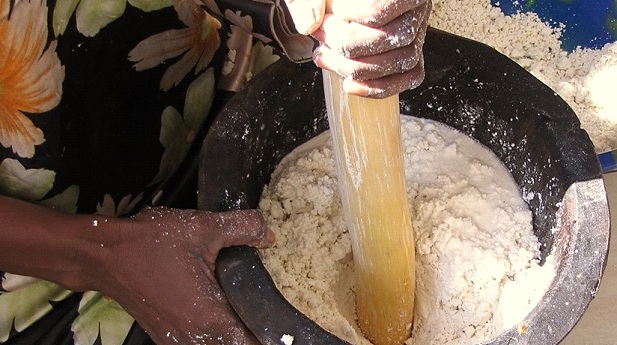Flour is one of those substances that most of us take for granted – until we need it.
If your normal source of flour is not available because of a survival crisis, you do have options!
1. Amaranth – Amaranth is a weed, but I prefer to think of it as an indigenous plant common across North and South America that produces a seed stalk. The seed stalks of the amaranth range in size from 4 to 8 inches in length and are packed with thousands of seeds. The plants grow prolifically and reseed easily as annuals.
An easy way to begin an amaranth planting is to simply buy the seeds in bulk at a grocery store that sells amaranth for cooking. Cast the seeds on the ground in spring, and some plants will grow. Just remember: They spread rapidly and widely over the years.
Harvest the seeds in the fall, and prepare a space where the seeds can dry out, such as in the rafters of an attic or sunny window. They can be processed with any of the techniques we’ve identified.
2. Acorns – Acorns are best harvested in the fall after they’ve fallen to the ground. They need to be dried, and the best way is to roast them. Take the cap off of the acorn and score them on one side with a knife. Place them on a baking sheet in an oven heated to 250 degrees Fahrenheit, or in a Dutch oven over hot coals. Toss them every 10 minutes up to an hour until you can cut one in half to reveal a dried, acorn nut.
Acorns are bitter due to the tannic acid or “tannins” that permeate them. To get rid of the tannins, you need to coarsely crush the acorns and soak them in water after a short roast. You then need to dry or dehydrate them again. This may take more than one soak, so taste as you go until the bitterness is gone.
3. Rye grass – Rye grass is a tall grass 3 to 4 feet in height. The seeds are long and narrow and distinct from some of the small seed heads on other grasses. Annual rye grass provides larger seed heads than perennial rye grasses, because annuals are so dependent on reseeding for proliferation.
Rye grass should be harvested in the fall when the grasses are browned and mature. The grass is shaken over a large basket and the seed heads are sometimes beaten with a stick to release the seeds. The seeds are then tossed and crushed by hand, and the wind is used to separate the rye seed from the chaff. The heavier rye seeds are captured in a fine mesh basket or container.
4. Cattails – Peel the wet roots and chop them into small pieces and then pound them with a little water to make a mash. There will be some fibers, so strain the mash through a screen. The resulting flour mash should then be left to dry and can be crushed into flour using any of the techniques we’ve identified.
Cattails are actually an excellent flour resource. In the early 1940s, cattails were essentially isolated to marshes on coastal areas of the east and west coast of North America. But during World War II, the government began a widespread program to distribute the seeds in order to jumpstart a new, alternative flour program. While the program was suspended after the war ended in 1945, the cattails you see across the country today are the results of the program.
The next time you bite into a homemade cookie, consider the fact that in a long-term survival crisis, most of the ingredients in that cookie likely would not be readily available.
One ingredient that could be, however, is flour and that is because you have a lot of different options when it comes to making your own.
To learn more about how to convert these and other natural substances into flour, check out Off the Grid News.
Image source: wikmedia
